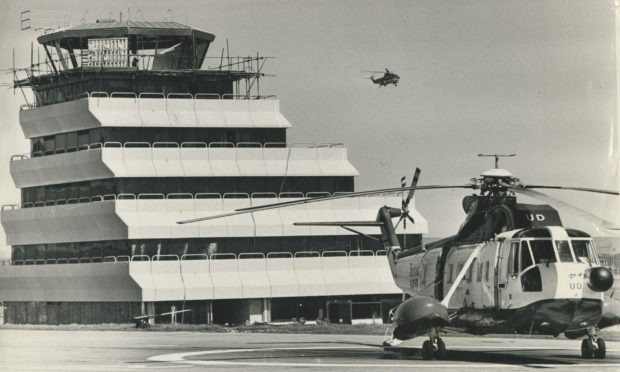Helicopters proved the most efficient way to reach the lonely oil platforms anchored deep in the bleak North Sea after the first major discovery of oil in 1969.
BP struck black gold in the Forties field in 1970, quickly followed by Shell in the Brent field off Shetland in 1971.
But operators would have to wait patiently until rigs, platforms, pipelines and supporting infrastructure was completed before cashing in on their find.
The first North Sea oil flowed ashore to a terminal at Cruden Bay in 1975, signalling the birth of an industry that would change Aberdeen forever.
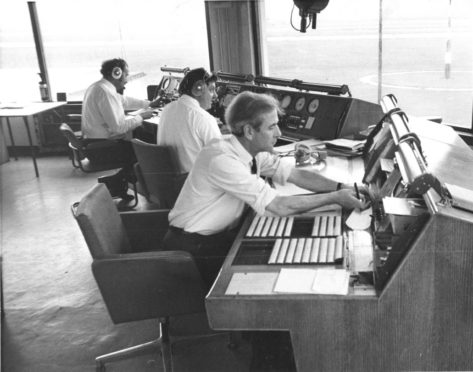
Helicopters shuttled oil workers between Aberdeen Airport at Dyce and the new, alien-like metal structures on the sea bed.
Air traffic controllers were kept very busy when 16,000 flights were made in 1972 alone, and it was decided that a dedicated heliport was needed.
Not only were helicopters needed for regular crew change rotas, but they were on standby for ad-hoc visits, emergencies as well as crucial supply and freight roles.
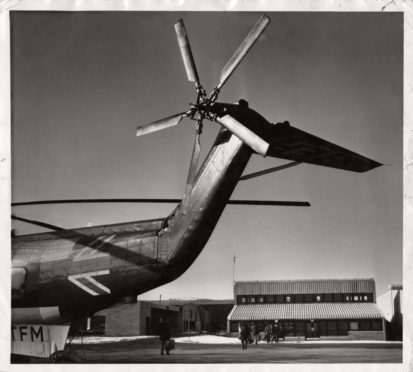
To cope with the increasing demand, the western perimeter of the airport was made a dedicated heliport with its own access from Market Street in Stoneywood.
Operator BEA built its own £100,000 facility in late 1972, while Bristow Helicopters was sharing facilities with Customs while their own base was under construction.
The primary helicopter operating from the heliport in the early 1970s was the S61 N Sikorsky which was 32ft long and had a boat hull for emergency water landings.
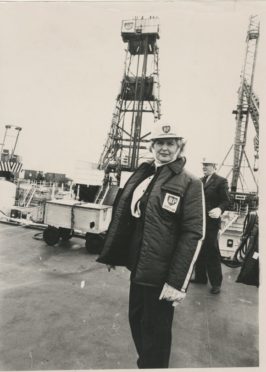
With oil and gas exploration taking off in 1975, then Conservative Prime Minster Margaret Thatcher and her husband Denis made their first helicopter trip to BP’s drilling rig Sea Quest.
It was the first rig to have discovered oil in 1969.
Wearing a rigger’s helmet and jacket, the trip made the headlines because Thatcher – who more commonly wore a twinset and pearls – had to borrow her daughter Carol’s trousers for the occasion.
While on board, Thatcher met a number of technicians and had lunch on the rig before flying back to base over the Forties field.
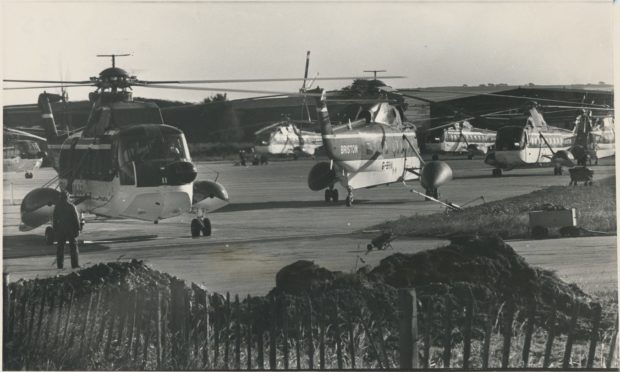
By 1976, the heliport was so busy that calls were made for additional bases in ‘downtown’ Aberdeen for ‘helicopter taxis’.
Three proposed sites included near Woodend Hospital, the former amusement park on the Links and south of the River Don and Bridge of Don.
Councillors at the time rejected the idea saying “although we look favourably on sites for medical emergencies, we are not anxious to see regular helicopter taxi services in Aberdeen”.
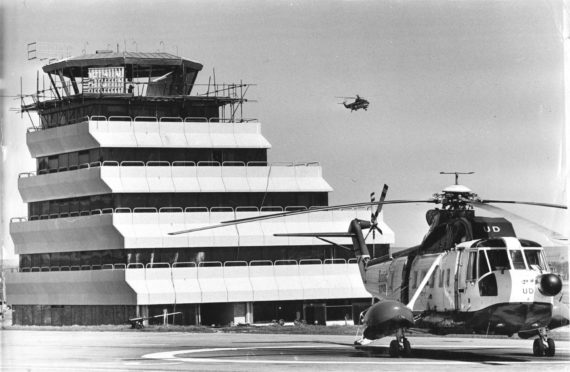
A new air traffic control tower looms over the heliport in this photo from 1978.
Despite various suggestions over the years, helicopter services remained at the airport and the Dyce base became the busiest heliport in the world.
The introduction of a sandwich bar saw an interesting advert for staff appear in the Evening Express.
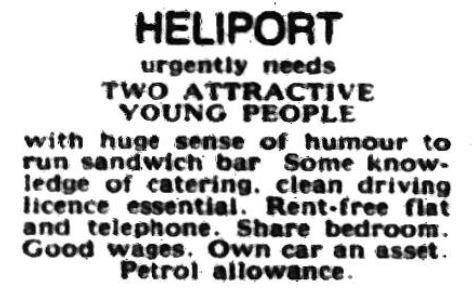
Catering experience wasn’t necessary as long as the employees were “young, attractive and had a sense of humour”.
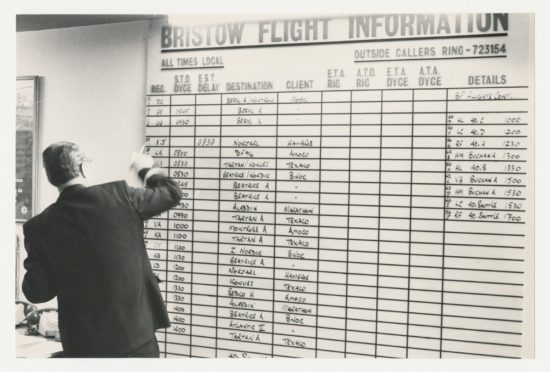
This destination board offers a rare glimpse inside the inner workings of the heliport at Christmas 1980.
A sight familiar to hundreds of thousands of offshore workers, the Bristow flight board showed the timings and destinations of various helicopter flights for different operators.
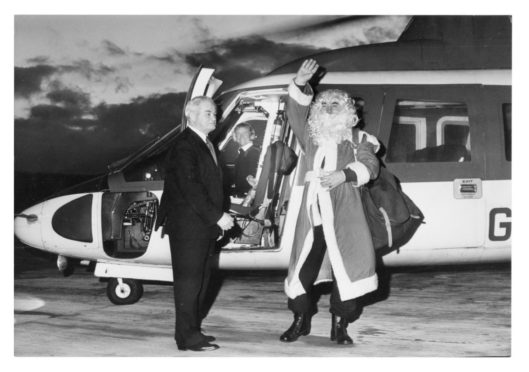
But the helicopters did not just transport oil workers, but on occasion other precious cargo too.
In 1984, Santa was stepped off a helicopter and was greeted by Alex McLeod en route to the Aberdeen Airport Social Club’s children’s party in 1984.
And there was a mercy mission with a difference when stricken seabirds were airlifted from the Odin Drill rig to Dyce.
The nine oil-covered guillemots became caught up in an oil spill from a Russian factory ship and were taken to Aberdeen Dogs’ and Cats’ Home for treatment.
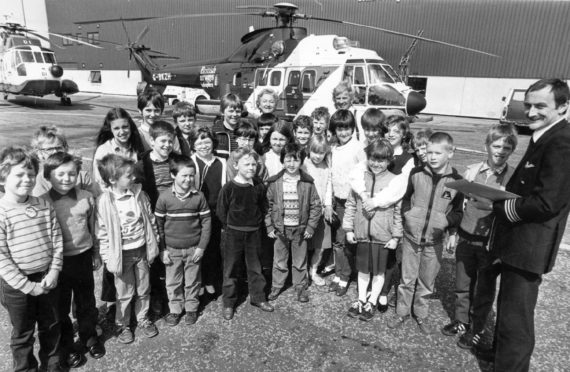
These youngsters from the former Esslemont School, near Ellon, had an exciting day out at the heliport in May 1984.
They were hosting some exchange pupils from Llanfihangel Glyn Myfr School in Corwen, Wales, and took them to see a Puma helicopter on a visit to Dyce heliport.
The Ellon youngsters were due to head to Wales later that month for their won exchange trip.
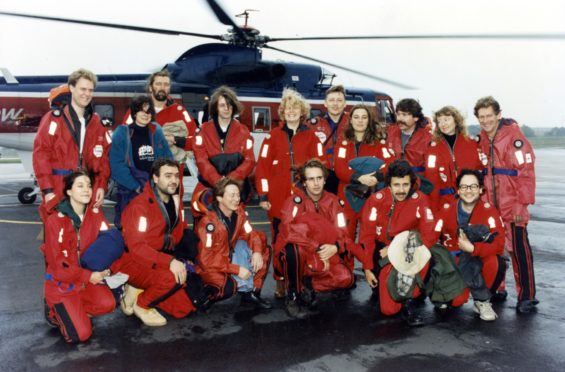
In 1993, the heliport enjoyed a taste of fame as the cast and crew of fictional TV drama series Roughnecks posed in front of the helicopter that flew them to the oil rig Dan Countess.
The TV show ran for two series and centred on the working and personal lives of the crew of fictional North Sea oil rig The Osprey Explorer.
High-profile cast members included actors Liam Cunningham, Ricky Tomlinson and Ashley Jensen.
